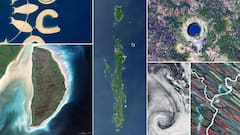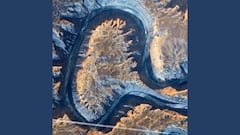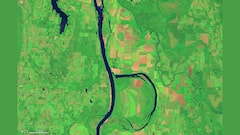What Is Amyloidosis? All About The Rare Disease That Pervez Musharraf Suffered From
Amyloidosis is a rare disease characterised by a buildup of an abnormal, insoluble protein called amyloid in organs throughout the body, as a result of which the organs do not function properly.

Pakistan's former President Pervez Musharraf died on Sunday, February 5, 2023, in Dubai, after a prolonged illness, the Pakistani military said in a statement. Musharraf, who was a former army general, suffered from a rare disease called amyloidosis, and left for Dubai in 2016 to seek medical treatment. Last year, he was admitted to a hospital in the United Arab Emirates (UAE).
Musharraf passed away at the age of 79.
Here's everything you need to know about amyloidosis.
What is amyloidosis?
Amyloidosis is a rare disease characterised by a buildup of an abnormal, insoluble protein called amyloid in organs and tissues throughout the body, as a result of which the organs do not function properly. Amyloid deposits in the body can cause several rare, serious conditions, and this group of conditions is called amyloidosis. If not treated, the organs with amyloid deposits can cease to work.
Amyloid can build up in different organs of the nervous system including the brain, and spleen, liver, heart, kidneys, the digestive tract, and other organs of the body.
Amyloidosis can occur in one organ or several organs of the body.
Almost 70 per cent of people with amyloidosis are men, and some forms of amyloidosis are more likely to strike people living with infections or conditions that cause chronic inflammation, according to Johns Hopkins Medicine.
While people receiving long-term kidney dialysis are at risk for developing one type of amyloidosis, modern dialysis techniques are making this less likely.
Some forms of amyloidosis are hereditary.
Types of amyloidosis
AL amyloidosis, or amyloid light chain amyloidosis, is the most common type of amyloidosis. Also known as primary amyloidosis, it occurs when abnormal light chain proteins in the body father inside organs and tissues, and is a serious illness that may become chronic or cause life-threatening medical conditions.
AL amyloidosis can affect the spleen, heart, kidneys and other organs, and can affect people with conditions such as multiple myeloma (cancer of plasma cells) or a bone marrow illness called Wadenström's macroglobulinemia (a rare type of cancer that begins in the white blood cells).
This type of amyloidosis starts in plasma cells within the bone marrow, which create antibodies with both heavy chain and light chain proteins. If plasma cells undergo abnormal changes, they produce excess light chain proteins that can end up in the bloodstream, causing the damaged protein bits to accumulate in the body's tissues and damage vital organs.
ATTR amyloidosis, or transthyretin amyloidosis, is a type of amyloidosis which often runs in families, and is characterised by the abnormal deposit of transthyretin proteins in the body. These proteins are also called prealbumin and are made in the liver.
The gene causing this kind of amyloidosis is more commonly found in people of African descent.
This type of amyloidosis can be inherited from a family member.
AA amyloidosis, or secondary amyloidosis occurs due to the buildup of amyloid serum A protein in the body.
The disease affects the kidneys in about 80 per cent of cases, and can complicate chronic diseases characterised by inflammation, such as rheumatoid arthritis or inflammatory bowel disease.
Wild-type ATTR amyloidosis occurs for no known reason, and most commonly affects the heart and nervous system. Also known as senile systemic amyloidosis, it typically affects the heart and tendons of elderly people.
This is likely to affect men aged above 70 years, and can cause carpal tunnel syndrome.
Localised amyloidosis is a type of amyloidosis that often has a better prognosis than the varieties that affect multiple organ systems, and typically affects the bladder, skin, throat or lungs, according to Mayo Clinic.
Causes of amyloidosis
Amyloidosis can develop as a primary condition or may be secondary to a different health condition. Amyloidosis could occur due to a mutation in a gene.
The disease could also occur due to outside factors such as inflammatory diseases or long-term dialysis.
AL amyloidosis occurs due to an abnormality in plasma cells found in the bone marrow. Abnormal plasma cells can produce abnormal forms of light chain proteins, which clump together into thread-like strings called amyloid fibrils, according to the United Kingdom's National Health Service (NHS). The body cannot easily clear away amyloid fibrils.
Therefore, amyloid fibrils build up as AL amyloid deposits over time, in tissues and organs, gradually causing the body parts to stop functioning properly.
What are the signs and symptoms of amyloidosis?
The signs of symptoms of amyloidosis include losing weight without trying, numbness, pain or tingling in hands or feet, feeling very weak or tired, purple spots or bruised-looking areas of skin around the eyes, increased tongue size, swelling in the belly, legs, ankles or feet, skin that bruises easily, bleeding more than usual after an injury, shortness of breath, severe fatigue, diarrhoea, possibly with blood, or constipation, skin changes such as thickening of easy bruising, and an enlarged tongue, which sometimes looks rippled around its edge, among others.
When amyloidosis affects the kidneys, there could be too much protein in the urine. One could experience swelling or kidney failure if amyloid deposits block the filters in the kidney.
How can amyloidosis be diagnosed?
Amyloidosis can be diagnosed through a urine test or a blood test, and may be followed by one or more imaging procedures to take a look at the body's internal organs, such as an echocardiogram, nuclear heart test or liver ultrasound. An echocardiogram is a type of ultrasound scan used to look at the heart and nearby blood vessels, and a nuclear heart test is an imaging test that shows how blood goes to the heart at rest and during exercise. One might also have to understand a genetic test to determine if they have the familial form of amyloidosis.
A tissue sample or biopsy may be taken from the fat under the skin on the abdomen, from bone marrow or the affected organ to see what type of amyloid is involved.
How can amyloidosis be treated?
The treatment for amyloidosis depends on its type, and is needed to slow the progression of the disease, reduce the impact of symptoms, and prolong life.
Different types of treatment for amyloidosis include chemotherapy, bone marrow transplant, medications and clinical trials, among others.
In the case of chemotherapy, medicines may be given to the patient to kill cancer cells or stop them from growing, or to prevent the growth of cells making the abnormal proteins in people with AL amyloidosis.
A bone marrow transplant, also called a stem cell transplant, uses healthy stem cells from the patient's own body. First, stem cells are removed from the patient's blood, and then, the person gets chemotherapy to kill the abnormal cells in the bone marrow.
After this, the stem cells are infused back into the body where they travel to the bone marrow and replace the unhealthy cells destroyed by chemotherapy.
The medications approved by the United States Food and Drug Administration (FDA) for transthyretin amyloidosis work either by "silencing" the TTR gene or by stabilising the TTR protein, as a result of which further amyloid plaque is not deposited in the organs.
Targeted therapies are used for certain types of amyloidosis. For instance, drugs such as patisiran (Onpattro) and inotersen (Tegsedi) can interfere with the commands sent by faulty genes that create amyloid, according to Mayo Clinic.
Drugs such as tafamidis (Vyndamax, Vyndaqel) can stabilise bits of protein in the bloodstream and prevent them from getting transformed into amyloid deposits.
Surgical procedures such as organ transplant can also be used. If one's kidneys are damaged by amyloidosis, they might require dialysis.
Top Headlines
Trending News






































